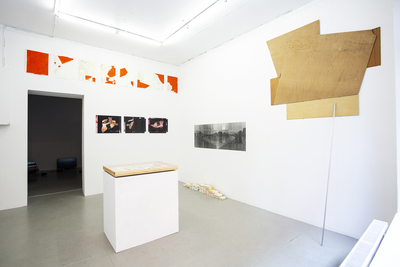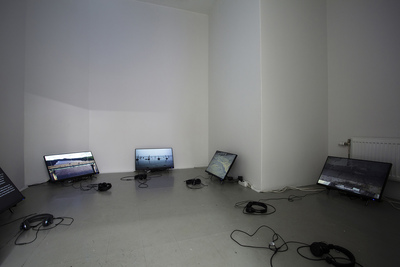BROWNSWORD, Neil (2022) The Future as Negative Spaces, ID:I Galleri, Stockholm. [Show/Exhibition]
1. The Future as Negative Spaces. ID_I _ galleri.pdf - Supplemental Material
Restricted to Repository staff only
Available under License Type All Rights Reserved.
Download (306kB) | Request a copy
brownsword_50mb 3.tif - Supplemental Material
Available under License Type All Rights Reserved.
Download (70MB) | Preview
brownsword_50mb 1.tif - Supplemental Material
Available under License Type All Rights Reserved.
Download (69MB) | Preview
brownsword_50mb 2.tif - Supplemental Material
Available under License Type All Rights Reserved.
Download (69MB) | Preview
![[thumbnail of The Future as Negative Space (exhibition)]](https://eprints.staffs.ac.uk/7971/5.hassmallThumbnailVersion/5.%20The%20Future%20as%20Negative%20Space%20%28exhibition%29.jpg)

5. The Future as Negative Space (exhibition).jpg - Supplemental Material
Available under License Type All Rights Reserved.
Download (1MB) | Preview
![[thumbnail of The Future as Negative Space (exhibition)]](https://eprints.staffs.ac.uk/7971/6.hassmallThumbnailVersion/6.%20The%20Future%20as%20Negative%20Space%20%28exhibition%29.jpeg)

6. The Future as Negative Space (exhibition).jpeg - Supplemental Material
Available under License Type All Rights Reserved.
Download (1MB) | Preview
![[thumbnail of The Future as Negative Space (exhibition)]](https://eprints.staffs.ac.uk/7971/7.hassmallThumbnailVersion/7.%20The%20Future%20as%20Negative%20Space%20%28exhibition%29.jpeg)

7. The Future as Negative Space (exhibition).jpeg - Supplemental Material
Available under License Type All Rights Reserved.
Download (1MB) | Preview
Abstract or description
The Future as Negative Spaces is a collective exhibition co-curated by IASPIS residents Neil Brownsword (UK), Yishay Garbasz (IL), Catherine Anyango Grünewald (SE), Weronika Bela & Ivar Hagren (SE), Dan Halter (ZA), Sara Kaaman (SE), Jenny Magnusson (SE), Lais Myrrha (BR), Angela Su (HK) and Benno Voorham (NL). The exhibition examined intersecting themes explored by artists that focused on the permeability of geographic borders; the consequences of deindustrialisation and globalisation.
'It is not by chance that borders, ruins, detritus from industries and buildings, fields of raw material extraction, accelerated obsolescence of objects and professions, economic monopolies, subjection, control, and annihilation of historically oppressed bodies, are themes running through the works presented here.'
Three works by Brownsword were curated for the exhibition at Galleri ID:I
Obfuscations (2022). The recovery and analysis of past material culture through a reengagement with archives, museum collections and redundant technologies has pre-occupied much artistic practice in recent decades. Brownsword revisits the appropriated imagery of British chinoiserie in ceramics manufactured in Stoke-on-Trent, rendered meaningless through mass production and assimilation in the West. These objects are reactivated and transformed through the digital modes of reproduction. Embracing the slippage and limitations via low-fi copying, Brownsword creates unfaithful derivatives that assign new value through their material translation, and interpretation. By deliberately corrupting iterations of the copy, Brownsword dismantles standardisation imposed by tradition, whilst retaining a familiarity to social memory and regional shared identity.
‘Taskscape’ (2020) explores the materiality’s of labour involved in China Clay extraction in St Austell –a region in the UK which has undergone socio-economic transformation as much of this industry has relocated to emerging economies. Taken from a term coined by social anthropologist Tim Ingold, ‘taskscape’ describes the enmeshing of technical and social practices in a flow that is ‘to labour as the landscape is to land’. In such contexts, Ingold argues, ‘temporality and historicity are not opposed but rather merge in the experience of those who, in their activities, carry forward the process of social life’. They, thus, make explicit the living nature of heritage and the active role that humans and materials play in its metamorphosis. The camera alights on the moments when clay is transformed during processing. It meditates on the vibration of machinery and shifting of material punctuated by interventions by the human hand, whether moving levers to coordinate machinery or shaking filter press bags full of residue. The film shares the mesmerising rhythms of slow television, inviting contemplation of the millions of different acts of ingenuity and interaction that combine to produce the clay used in Stoke-on-Trent’s bone china industry.
National Treasure (2014) introduces critical insights into aspects of skill displacement following the aftermath of decades of deindustrialisation in North Staffordshire - the UK’s historic centre of ceramic production. Its parody of the ‘artisan on display’, critiques how demonstrations of ‘indigenous’ artisanal craft from factory tourism experiences, obscure the realities of profit-first strategies of mass-automation and global outsourcing. Continuing the genre of the romantic ruin commonly depicted in 18th century British ceramics, ex-industry China painters were employed by Brownsword to paint on the backs of discarded platters found at former historic sites of production through a series of intermittent performances. Yet portraying picturesque decay was not the objective, the spaces within the foot of the plates, where a painter would traditionally sign their workmanship were instead graced with images documenting the fallout of industrial change.
| Item Type: | Show/Exhibition |
|---|---|
| Faculty: | School of Digital, Technologies and Arts > Art and Design |
| Event Title: | The Future as Negative Space |
| Event Location: | ID:I Galleri, Tjärhovsgatan 19, Stockholm |
| Event Dates: | 19 - 22 August 2022 |
| Depositing User: | Neil BROWNSWORD |
| Date Deposited: | 25 Apr 2025 14:42 |
| Last Modified: | 25 Apr 2025 14:42 |
| Related URLs: | |
| URI: | https://eprints.staffs.ac.uk/id/eprint/7971 |

 Lists
Lists Lists
Lists